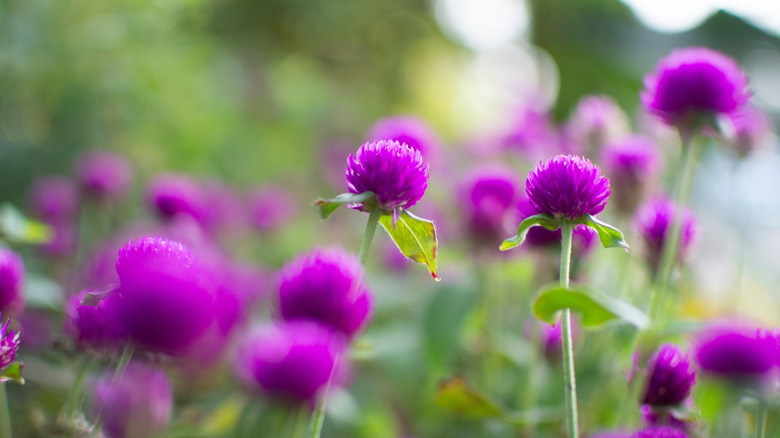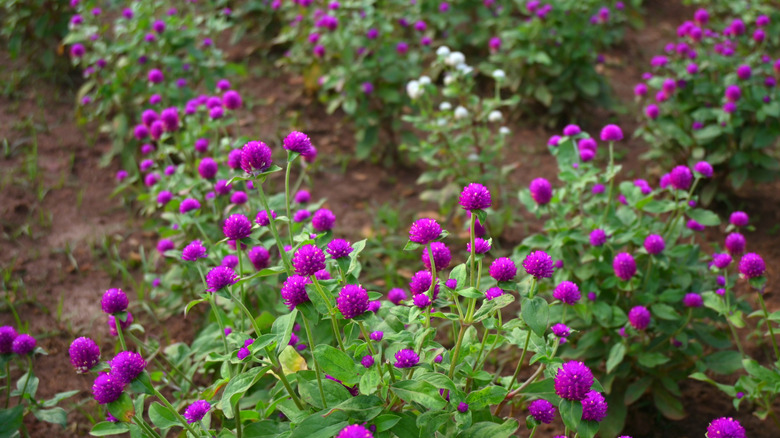Gardening Mistakes To Avoid Making With The Beautiful Gomphrena
Gomphrena (Gomphrena globosa), also known as globe amaranth, is an easy-to-grow flower and a perfect addition to summer gardens that's also great in fresh and dried flower bouquets. However, despite its reputation as a low-maintenance flower, there are some mistakes you need to avoid if you want your gomphrena to thrive and look its best. Some of the worst errors you can make with gomphrena include not accounting for its low germination rate, failing to provide it enough light, planting it in the wrong type of soil, and forgetting to pinch it back.
You can either start your gomphrena indoors and transplant it or sow it directly in your garden. Regardless of the strategy you opt for, it's best to soak the seeds before planting, and sow more seeds than you need, since gomphrena is known for having a relatively low germination rate. The last thing you want is to have few (if any) of your gomphrena seeds sprout and be left without the flowers for the summer. If you start your gomphrena indoors, be sure to wait until after your last frost and to take time hardening it off, as globe amaranths are not frost tolerant and require warm temperatures to grow well.
Choosing the right location for your gomphrena
Whether you're directly sowing gomphrenas or transplanting the seedlings outdoors once the weather is warm enough, it's important to pick the right spot in your garden in order for your plants to thrive. Gomphrena grows and blooms best in full sun. While you may be able to grow it in part shade, don't expect it to flower nearly as well in a shady location. Gomphrena is also far more vulnerable to powdery mildew and other diseases when it doesn't receive enough light.
It's not just light levels you should consider when looking for the best spot to plant gomphrenas; you also need to think about the growing medium. Gomphrena needs well draining soil to thrive and can't grow as well in soggy or waterlogged conditions. If you're concerned your garden doesn't have good enough drainage for growing these flowers, you can amend your garden soil with compost before planting.
Gomphrenas, much like dahlias, will fill your garden with more flowers if you pinch them back once the first blooms appear. While it may be painful to pinch your gomphrena back before you can enjoy its first flowers, doing so will make the plant sturdier and lead to more blooms down the line. Gomphrena is a cut-and-come-again flower, so it can bloom all season long, giving you plenty of time to enjoy its beauty.

